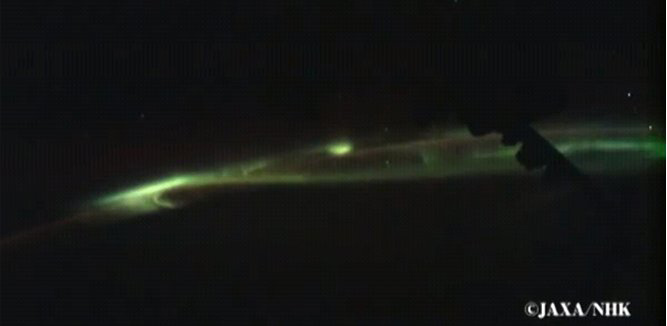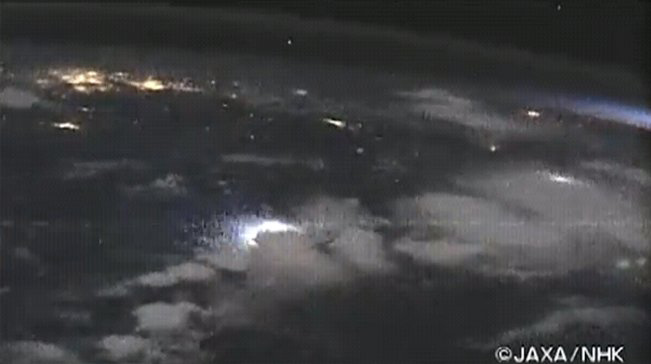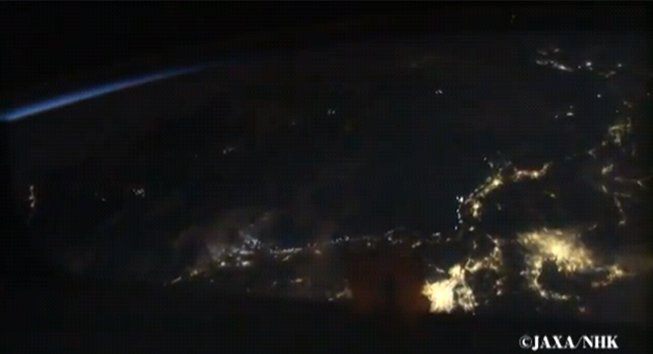New Space Station Camera Shows What Night Views of Earth Really Look Like

A new camera on the International Space Station is offering astronauts a better way than ever before to share what Earth really looks like from space.
Until now, less-than-capable equipment and low lighting conditions at night meant that astronauts couldn't capture night scenes from the space station on camera the way they looked in real life. But a Japanese video recorder called the Super Sensitive High Definition TV, or SS-HDTV, camera has helped to change that.

The camera arrived on the orbiting laboratory in March 2011, and astronauts have been using it to take spectacular footage ever since. Japan Aerospace Exploration Agency (JAXA) astronaut Satoshi Furukawa, who has been living on the space station since June, had already taken more than 30 hours of video with the camera by October.
In particular, the camera offers a new ability to capture some of the dynamic interactions between the Earth's atmosphere and the vacuum of space, an area known as the cosmic shore. These images are both beautiful and scientifically useful, researchers say.
The new tool has even allowed astronauts to film transitory phenomena such as meteors and sprites, a form of lightning that strikes the upper atmosphere.

"Using this super sensitive camera, we have observed the lightning, sprite, aurora, meteor, noctilucent cloud and airglow," Keiji Murakami, a JAXA senior engineer, said in a statement. "The phenomena of the sprite has not yet been studied in high definition until now. The color video of the sprite was taken for the first time from space using this camera."
This newfound ability is particularly useful given that about 50 percent of the time the station crew looks down on Earth, they have a night view. This is because the laboratory orbits the planet 16 times a day, offering the astronauts views of 16 sunrises and sunsets each day.
Get the Space.com Newsletter
Breaking space news, the latest updates on rocket launches, skywatching events and more!
"Half of the Earth view from [station] is a night view," Murakami said. "And the day view and night view are very different."
Follow SPACE.com for the latest in space science and exploration news on Twitter @Spacedotcom and on Facebook.
Join our Space Forums to keep talking space on the latest missions, night sky and more! And if you have a news tip, correction or comment, let us know at: community@space.com.

Space.com is the premier source of space exploration, innovation and astronomy news, chronicling (and celebrating) humanity's ongoing expansion across the final frontier. Originally founded in 1999, Space.com is, and always has been, the passion of writers and editors who are space fans and also trained journalists. Our current news team consists of Editor-in-Chief Tariq Malik; Editor Hanneke Weitering, Senior Space Writer Mike Wall; Senior Writer Meghan Bartels; Senior Writer Chelsea Gohd, Senior Writer Tereza Pultarova and Staff Writer Alexander Cox, focusing on e-commerce. Senior Producer Steve Spaleta oversees our space videos, with Diana Whitcroft as our Social Media Editor.









